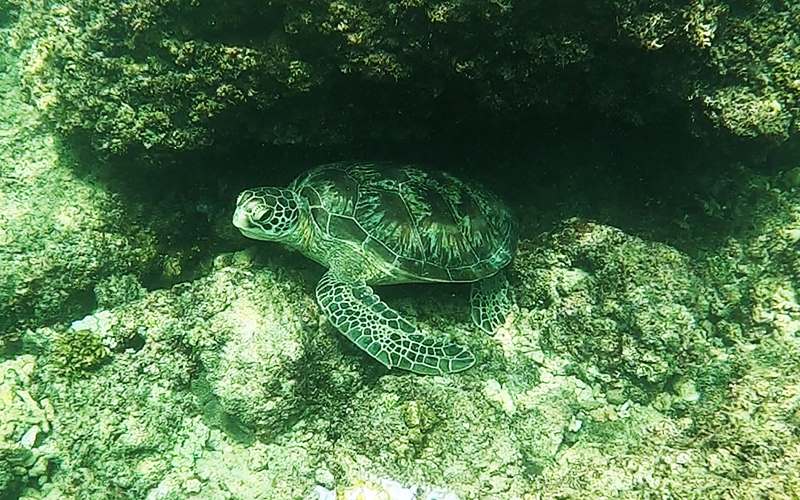
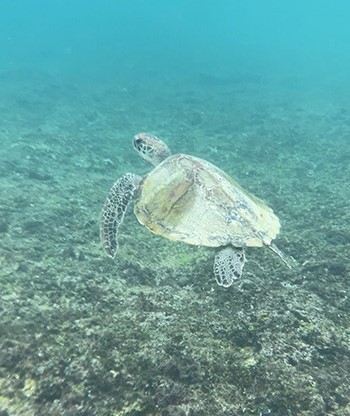 In’Carapace
In’Carapace
Six students working to protect Costa Rican leatherback turtles
The In'Carapace project is dedicated to helping preserve leatherback turtles on the east coast of Costa Rica and combat the extinction of this species. The team is made up of Salim, Thomas, Hugo, Gauthier, Clément and Victor, all students at Grenoble INP - Phelma, UGA.
Research assistant assignments
The students work with the LAST (Latin American Sea Turtles) Association, which supervises their training on site.As student engineers, they act as research assistants that:
- Patrol beaches at night to prevent poaching
- Tag the turtles
- Gather scientific data for research
- Build new nests
- Ward off predators
- Measure and release newborn turtles
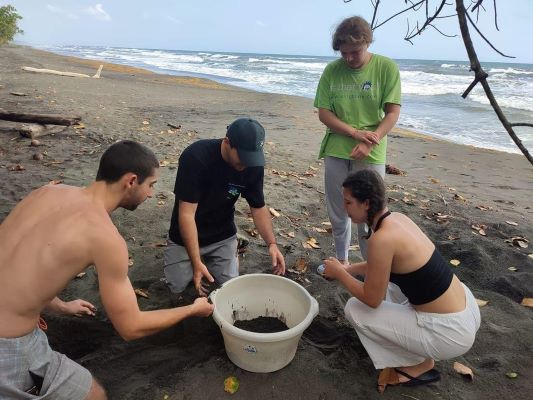

Combating the extinction of marine wildlife
The leatherback turtle is the biggest species of turtle, measuring on average 1.60 m and weighing nearly 400 kg. Although they can live for up to 50 years, they are threatened right after hatching by predators such as crabs, birds and caimans. They are also prey to other dangers, such as water pollution, abandoned fishing nets and the destruction of shorelines.
Follow its progress on Instagram: @in_carapace
RINP’ba
Working to protect Indonesian turtles
One of the RINP'ba project's aims is to protect Indonesian turtles.
A long-term, multifaceted student project
This project was started by another group of students in 2022 and is actively supported by Fondation Grenoble INP.
Dimitri, Adèle, Guillaume, Thibaut, Léo and Charles, students at Grenoble INP - Ense3, UGA, decided to use their gap year to take over this four-part project in Indonesia that includes plastic recycling, forest protection, fish farming and turtle protection.
Monitoring the nest until the babies hatch
The RINP'Ba association is committed to the turtle protection project on Marak Island. One of the project's key achievements has been the creation of a hatchery on the nesting beach. It is fenced off to protect the eggs from land predators when the eggs are found on the beaches. The students have also set up patrols to monitor the beaches where the turtles lay their eggs. During their rounds, they identify sites where eggs are laid and help combat poaching and protect against wild predators.
« Our main objective is to ensure the turtles' safety throughout the egg-laying period and to monitor the nest until the baby turtles hatch. »
Find the association on Instagram: rinpba_project
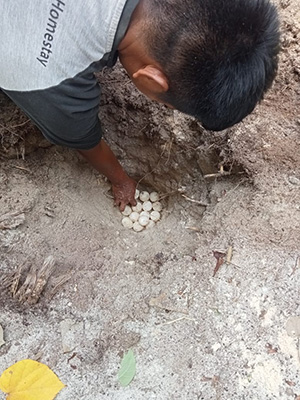
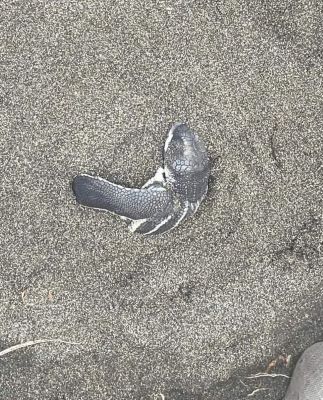
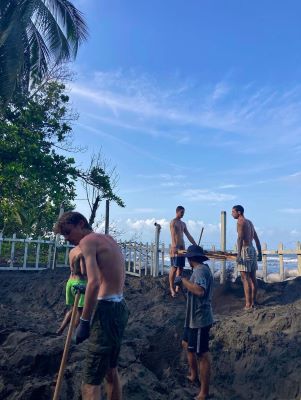
© RINP'Ba / © In'Carapace


